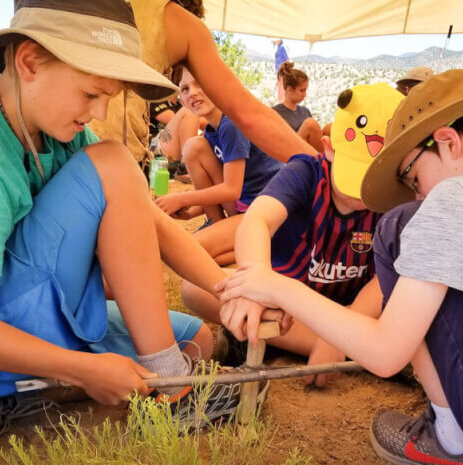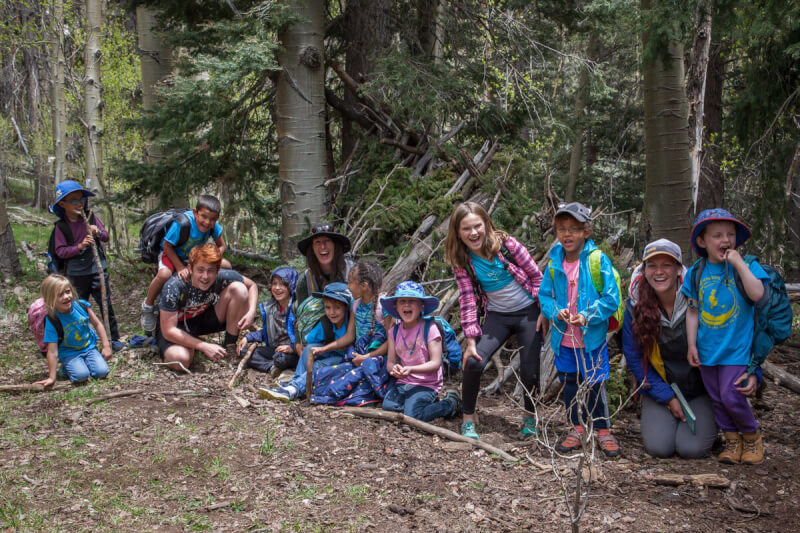‘Piglet was busy digging a small hole in the ground outside his house.
“Hallo Piglet”, said Pooh. “What are you doing?”
“I’m planting a haycorn, Pooh, so that it can grow up into an oak tree, and I’ll have lots of haycorns just outside my front door, instead of having to walk miles and miles. Do you see, Pooh?”
“Supposing it doesn’t grow up into an oak tree with lots of haycorns?” said Pooh.
“It will, because Christopher a robin says it will, so that’s why I’m planting it.”
Piglet put the haycorn in the hole he had made, covered it with earth and jumped up and down on it.’
– From The House at Pooh Corner, by A. A. Milne, originally published 1928.
It was an early beginning to acorn season here in Pacheco Canyon. The monsoon rains didn’t come as strongly and frequently as in previous years and so, our plants have been moving through their fruiting phase swiftly so as to send the nutrients they do have back down into their roots, where they’ll hold them until more moisture comes. Instead of rains, the fires came through the lands around where I live but we have beautiful big acorns still for gathering.
Amazingly, here in the desert we have a variety of oak trees! Unlike the grand oaks of the east coast or Europe, ours are generally smaller and so may be passed by more easily by you until you get a feel for them!
Generally in Northern New Mexico and around Santa Fe we most commonly find Gamble Oak (Quercus gambeli), Shrub Live Oak (Quercus turbinella), Grey Oak (Quercus grisea) and Wavyleaf Oak (Quercus x pauciloba). Botanically speaking Oaks are in the ’Fagaceae’ family of plants (the Beech Family). ‘Quercus’ is the ‘genus’ or specific line of that family and the word that comes after ‘Quercus’ gives a description of the species or specific type of oak.
Oak trees are divided into two groups – the first group are the ‘black oaks’. These trees have pointy or toothed leaves and small hairs on the inside of the acorn shell when it is cracked open. (Shrub Live Oak is in the Black Oak side of the family.)
The second group is that of the ‘white oaks’. These can be determined by their lobed leaves (rounded edges) and the lack of hair found on the inside of the acorn shell. (Gamble oak, Grey Oak and Wavyleaf Oak are all in the White Oak side of the family.)
The following botanical drawings are by a wonderful botanist Robert DeWitt Ivey, from his thick plant identification book ‘Flowering Plants of New Mexico’. These pictures will give you a beginning identification for the oaks you see around you.
Oak trees are well known for their beneficial insect-plant relationships. Have you ever seen an ‘oak apple’? It’s an insect (wasp) nest laid on an oak leaf that swells to accommodate the small wasp larva who grow within it. These insects are given accommodation by the oak as they pollinate the oak, which in turn forms acorns. Check out this link for a bit more information about oak apples and the galls they make when they harden: https://en.m.wikipedia.org/wiki/Oak_apple
Below is a photo I took when out on a walk this summer. Most oak trees will have oak apples on them somewhere, so take time to have a treasure hunt and look for the oak apples as you come across oak trees.

Acorns are one of the most important foods in human history, really and TRULY! Why don’t we eat them still? Acorns (and the whole part of the oak tree) contain tannins that are extremely bitter and when eaten in excess can a cause upset stomachs and diarrhea. However, with a little effort, we can ‘leach’ the tannins out in water (they’re water soluble) and then happily these protein rich, oil rich and carbohydrate rich nuts either as a flour in baked goods or as ground nuts in a burger, casserole or stew.
Before we go further, I want to mention that although tannins are extremely bitter, they are also astringent (drying, tightening and toning) and can be used very effectively as a medicine taken in appropriate amounts internally or applied topically for specific conditions such as diarrhea, as a mouthwash and poultice for inflamed gums or to sooth sore throats (although I prefer marshmallow root for sore throats). For external or topical use a decoction/tea can be made of the leaves, inner bark, unleached acorns or oak galls and placed on second degree burns. This application seals the burns and stops them from weeping and possible infection.
How do we LEACH acorns, then, so we can eat them?
While I was attending Winter Count Primitive Skills gathering* this year, I was fortunate to catch a fascinating class on acorn processing by an exceptional bioregional herbalist of the southwest desert region, called John Slattery. John took a large crowd of us through the steps of processing acorns (that have already been gathered and dried) into flour. We then made an incredibly delicious and moist sweet acorn bread. Here is John’s blog post on acorn processing – it’s well written and should give you a clear step by step understanding of how to gather, dry and prepare acorns to eat! And they’re worth eating!!!
John does give a few recipes to try out at the bottom of the blog post and here is a simple recipe (I have slightly modified) to entice you into acorn eating!
ACORN PANCAKES from Sharon Hendricks (Slightly modified by me!)
- Break an egg into a bowl. Add:
- 1 teaspoon avocado/coconut oil
- 1 teaspoon of honey or sugar
- 1/2 cup of ground and leached acorns
- 1/2 cup of corn meal
- 1/2 cup of whole wheat, white, spelt, or gluten-free flour
- 2 teaspoons of double action baking powder
- 1/2 teaspoon of salt
- 1/2 cup of milk
- Beat all together. If the batter is too thick to pour, thin it with milk. Pour pancakes into a hot, greased griddle and cook slowly until brown on both sides.
- Serve with butter and syrup or wild blackberry jam. Delicious!!
*(If you’re interested in the primitive skills gathering I attend each year, here is the link:- https://wintercountcamp.com/)
Just to round this blog post out….here’s a little more from Pooh Bear in The House Around the Corner…

I thought Tiggers were smaller than that.” Said Piglet
“Not the big ones,” said Tigger.
“They like haycorns,” said Pooh, “so that’s what we’ve come for, because poor Tigger hasn’t had any breakfast yet.”
Piglet pushed the bowl of haycorns towards Tigger, and said: “Help yourself,” and then got close up to Pooh and felt much braver, and said, “So you’re Tigger? Well, well!” in a careless sort of voice. But Tigger said nothing because his mouth was full of haycorns.
After a long munching noise he said: “Ee-ers o i a-ors.“
And when Pooh and Piglet said “What?” he said “skoos ee,” and went outside for a moment.
When he came back he said firmly: “Tiggers don’t like haycorns.”
“But you said they liked everything except honey,” said Pooh.”
“Everything except honey and haycorns,” explained Tigger.














